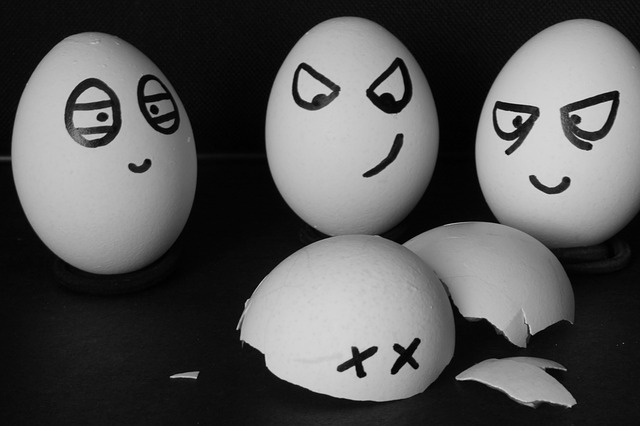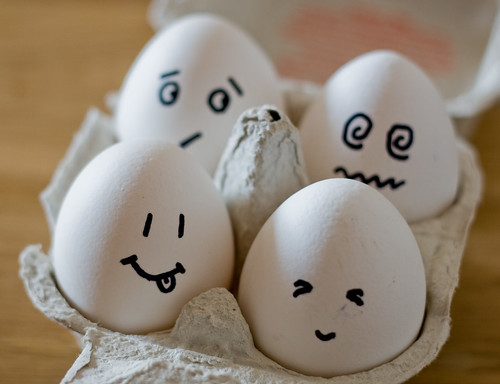
Whether something is old-fashioned or not doesn’t resolve the question of whether it’s true or not. Continue & Comment
What Are You Waiting For?
What will I be like at 80? This was the question which confronted me back when I went through Julia Cameron’s Artist’s Way. (2013 – hasn’t time flown?)
The first thing that came to mind was ‘dead’, but since that didn’t really fit in with the purpose of the exercise, I tried again, trying to be a bit more optimistic this time.
About to go, my entry began, and went on to suggest that I would be the kind of old woman who enjoys shocking people by how directly she speaks, and doesn’t mind being disliked or unpopular.
 Or as I put it in the post I wrote at the time, “if I do make eighty I bet I’ll be one of those acute old ladies who says what she thinks you need to hear and doesn’t mind how excruciatingly embarrassed you are by it.”
Or as I put it in the post I wrote at the time, “if I do make eighty I bet I’ll be one of those acute old ladies who says what she thinks you need to hear and doesn’t mind how excruciatingly embarrassed you are by it.”
Now admittedly, I’ve got nearly fifty years to reach this happy state of affairs (if I don’t die first), but as it stands, this is about the opposite of who I am now.
I don’t like to be disliked, and the feeling that I may have just offended someone eats away at me like a vinegar bath, leaving me anxious and restless. There are times I feel it would be advantageous to take a vow of silence, and then no one could take offence at anything I say.

Don’t get me wrong, I’m not in the habit of being offensive; I just worry that I may have inadvertently given offence. It seems quite easy to do, particularly when you are not entirely at home in any one culture.
Perhaps that’s what I’m looking forward to about being old and near my death: I’ll have stopped worrying so much; and I’ll be open, honest and straight-forward enough to tell people the truth without hedging it about with fluff and diversion (though still, like Elizabeth Bennet, endeavouring “to unite civility and truth”).
And being old and eyeballing my approaching death, I won’t be bothered by any resulting unpopularity. I hope. Perhaps, like the lady who intends to wear purple, I’d better start practicing now, so as not to take people by surprise.

What are you looking forward to about being old? And have you considered starting now?
How to Tell if an Egg is Bad
If they are engaging in cyber-bullying or promoting the spread of the international slave trade, a Bad Egg classification is straightforward.

But what of those more domestic eggs that sit so silently in your pantry? How can you know what secrets lurk within their albumen?
There are varying theories, some more odd than others. Some say you should shine a strong light through it to see if there’s a chick inside. Others suggest shaking the egg to hear if it sloshes (it shouldn’t), or spinning it (it should stop after you touch its centre-point), or plopping it into water to see if it sinks (bad eggs are alleged to float).
With half a dozen suspect eggs on our hands, we decided to conduct an experiment. We tried the spinning, the shaking, and the sinking; before finally using the most reliable of all tests: cracking the eggs open. (Outside.) Results? Mixed.
 Egg #1 spun plentifully, gave a faint ‘thunka’ noise when shaken, and sank – on an angle.
Egg #1 spun plentifully, gave a faint ‘thunka’ noise when shaken, and sank – on an angle. 
Egg #2 also spun plentifully, sloshed when shaken (although this may have been due to the vigour of the shaking) and stood on end under water as all good eggs should. It was a passable egg – not fresh, but not rotten. Call it a curate’s egg.

Egg #3 spun less, kept quiet when shaken, and stood on end under water.
Egg #4 spun lots, kept quiet when shaken, and stood on end under water.
Egg #5 spun less, made a little bumping noise on being shaken, and sank on an angle. 
Egg #6 spun a bit, kept quiet, and sank upright after bobbing.
So…
An egg which sinks on an angle could be good or bad. An egg which sinks on end could be good, bad or indifferent. Not a very reliable test.
An egg which makes a noise when shaken could be good, bad or indifferent. An egg which remains silent could be good, bad or indifferent. Again, not a very reliable test.
An egg which spins a little could be indifferent or good. An egg which spins a lot could be indifferent or bad.
The obvious conclusions to draw are that spinning provides the closest thing to a working test, out of the three we sampled; and that simulated drowning and the use of force do not produce reliable information.
What methods have you tried for testing your eggs? Found anything that works?

